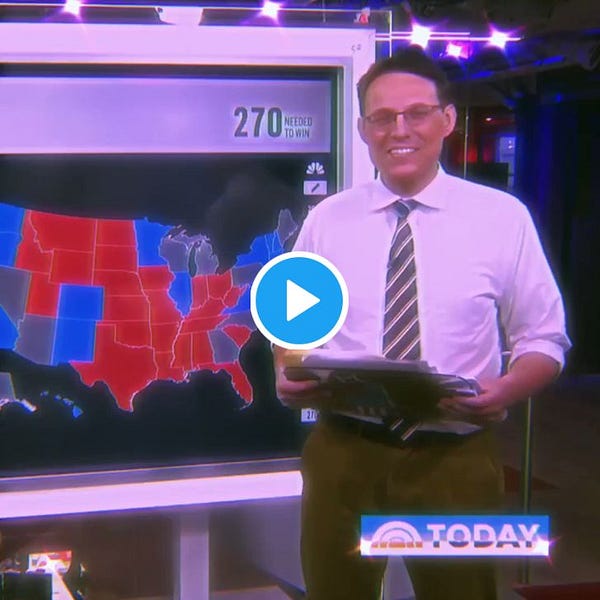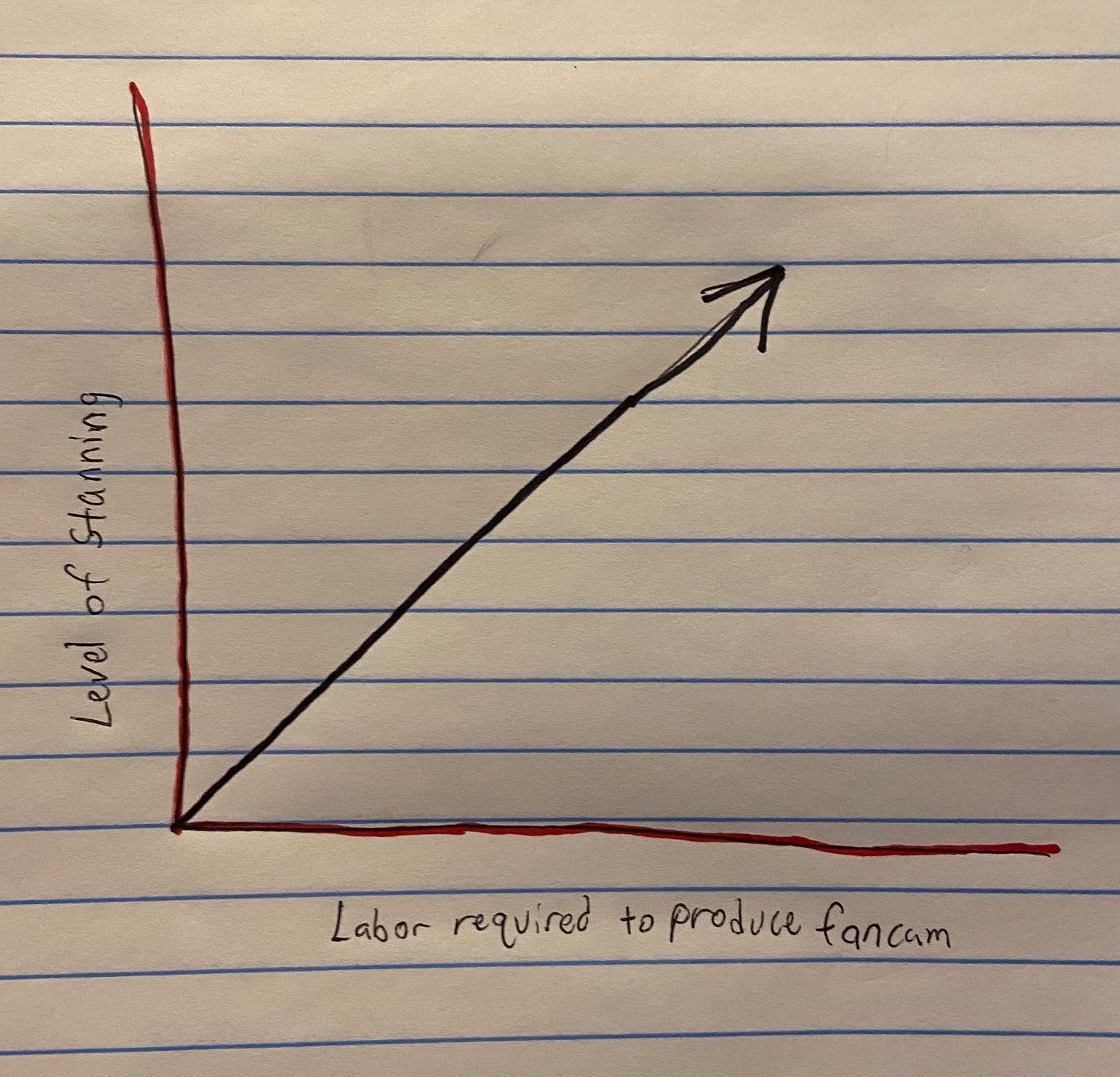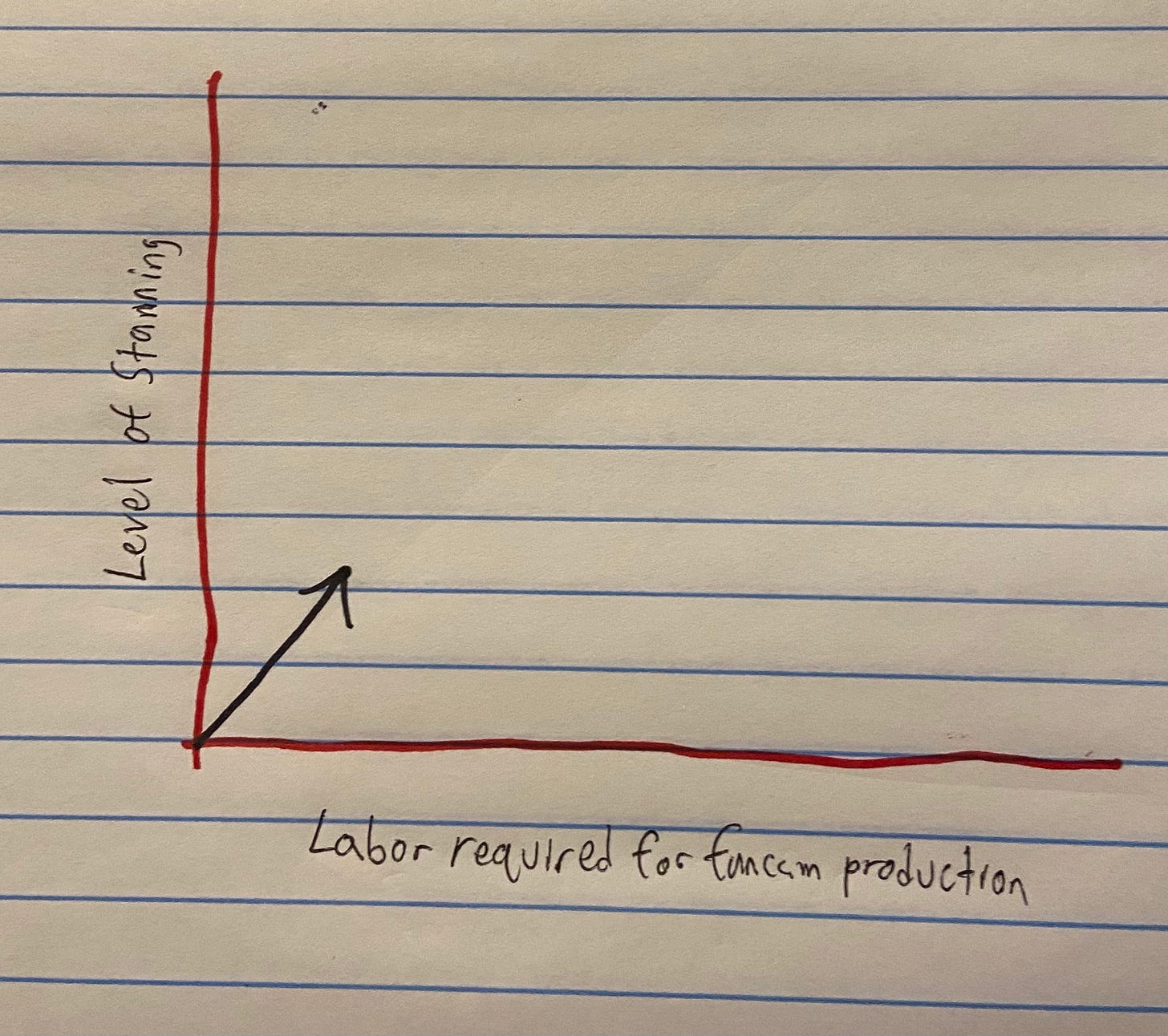stan everything
if everything has stans, nothing has stans
I’m not trying to get political on here, but it seems like nobody else is going to say it: there was a presidential election held this week. If you haven’t heard, the United States of America held an election to determine who would be the next president of the country. Would it be Donald Trump or Joe Biden? Usually, this stuff is over and shut, but I guess all of the states decided they’ll get to the ballots when they get to them and everyone else can shove it. So right now it seems like Biden has it in the bag, but I’m gonna wake up tomorrow to a push alert that’s like “Danger point! Trump has ordered the Proud Boys to murder-kill Congress!” It’s anybody’s game.
In the interim, a lot of people have been posting. Across all of the social networks and listservs and Discord servers and group texts, everyone’s posting. On one group chat, I may or may not have jokingly threatened to car bomb a certain former Indiana mayor if he receives a cabinet appointment. Lots of people are posting through it.
It’s weird to post in limbo and every limbo is different. For instance, we’ve been posting for the last eight months about when the virus stuff is gonna end. A lot of the posting I saw in that field was about coping with loneliness or how to create a home office or whatever. There was a type of melancholy in the posts I saw — an unstated recognition that who the hell knows when or if this is ever really going to end.
This week’s election internet limbo has felt similar, but more upbeat. It’s got the “who the hell knows when this will end?” nihilism of pandemicposting with an implied wink of acknowledgment that it will end pretty soon and the steps needed to make the limbo end are known. The one and only step: finish counting votes. (This could either mean “count every vote” or “stop counting.”) In the meantime, everyone’s going nuts.
Two of my favorite mini-trends this week play into the idea of “stan culture” (more on this in a bit). The first is happening in the replies of Dave Wasserman, editor for the Cook Political Report, who typically calls races as dead and done with the catchphrase “I’ve seen enough.” Now, I do not follow many politics people on Twitter because I am not a sociopath, and caring about polls is for dorks. Maybe this has been happening for a while — I wouldn’t know (because of the aforementioned reasons including “not hating myself,” “not sociopathic,” “not a dork”).
But I have enjoyed everyone demanding that he say the line.
This has all of the makings of a good meme. Focused, purposeful, but pliable enough that everyone can put their own spin on it. I enjoyed it and am continuing to as long as this process drags on.
Secondly, I’ve seen a few fancams going around. As we have covered previously, fancams, if I were to definie them by the current iteration of the form, are essentially sizzle reels devoted to one personality. They’re usually set to upbeat music with a tone that implies something like, “look what a boss this person is.” Flo Milli is a standard choice. You probably already know all of this.
The past few days have led to a surge in quasi-ironic fancams devoted to the on-air stars of election coverage. Steve Kornacki fancam. John King fancam. Jacob Soboroff fancam. Abby Phillip fancam. Chris Cuomo fancam. Many of these are semi-ironic, by which I mean that they take someone’s genuine affinity for a subject, and exaggerate it ten-fold so that it is comedic and a little disingenuous but not actually dishonest.


The most notable fancam I’ve seen, however, has been fron an account, @BLEORGIA, created for the purpose of posting a single fancam celebrate Georgia flipping from red to blue early Friday morning. It is impeccably edited and features a shot of a certain infamous needle that made me cackle. It got me good! (It also features a shot of Tblisi.)
Both of these memes, in their own way, are products of what we know as “stan culture.” I would like to clarify an important point: stan culture is not just a group of people liking something a lot. I really feel like drilling this point home because I feel like I read an article every other day about how six people on social media said that they like something, and suddenly they’re stans.
Each individual stan culture requires in-group jokes, presentation formats, and logic that one can only fully comprehend if they are a stan. Dave Wasserman has a stan culture around him, as evidenced by the large number of people begging him to say a catchphrase specific to him. Contrast this with, for instance, Dr. Anthony Fauci, who I would argue has many admirers, but does not have a stan culture around him. He is well-known and a lot of people on the internet are talking about him, but they are talking about him because he was on TV a lot and became a public figure, and — crucially — everyone is talking about him in different ways. Yes, there are many funny posts about Anthony Fauci, but there is no uniformity or common bond linking them, other than the subject.
That’s not meme culture, or stan culture, that’s just people on the internet talking about a notable person in the news. This has been going on forever. Like, literally forever. Would you say that Martin Luther King, Jr. had stans? Would you say Martin Luther had stans? Would you say Jesus Christ had stans? The term “stan” has become almost as meaningless and catch-all as the word “meme” (which I’ll remind you, because I have been a pedant in a while, refers to an overall trend and not an individual instance of said trend).
Part of the reason I think people now see everything has a stan has to do with the speed of technological advancement. This is a point I make a lot so I apologize if I’m repeating myself. But the visceral appeal of fancams, for me and I think for many others, is the mere fact that they exist at all. “I can’t BELIEVE someone made a fancam for Georgia??” and so on.
Anyone who has used video editing software prior to maybe three years ago understands that video editing has historically been a labor intensive process. Assemble the clips, cut the clips together, find music to set the cut to, add visual effects. People who used to make Anime Music Videos for YouTube on Windows Movie Maker understand this.
Amateur video editing is work that used to take hours and hours and can now be done in minutes on a smartphone, in a process largely automated by premade filters and ready-to-go sound clips on platforms like TikTok and Triller. (The best illustration of this concept this century has been the rise and fall of faceswap memes — which used to require decent photoshop skills and now only require Snapchat.) I think that, mentally, however, we equate the mere existence of any produced online video with an equivalently large amount of motivation. “This person must really stan this guy if they produced a whole fancam for it.” I think this impulse is also why people worry too much about deepfakes, equating convincing special effects that used to be labor-intensive but are no longer with strong motivations such as election interference, when the reality is they’ve mostly been used to make funny goof clips.
Here, I made you a chart:
(I am NOT a data journalist.)
Here is how I think most people perceive fancams: the level of a person’s stanning is roughly equivalent to the amount of labor necessary to produce the fancam. In other words, the more elaborate a fancam, the more a person stans the subject of said fancam. This impulse makes sense. Why would someone waste energy on something they don’t really care about?
The answer is that it’s actually incredibly easy to produce amateur video like highly-edited fancams. Again, smartphone apps with ready-made templates are readily available, and the general fancam style is well-known at this point. There is little personal creative effort one needs to expend to make one of these videos. Making a fancam can be automated to the point that I’m surprised there isn’t a Twitter bot already doing this.
So we actually end up with two other charts.
This one gets us closer to reality. Fancams require relatively little labor but the perceived level of effort leads to an assumption that the fancam creator is a stan. For relatively little investment, anyone online can look like they are deeply entrenched in a certain subculture, whether its K-Pop or Barbz or the MAGA cesspool. It’s also why there are so many flooding social media every day. Cognitive surplus is cheap and abundant, as are once-expensive video production tools.
I think the closest that we get to reality, however, is actually chart 3, where the fancam is produced without much effort by someone who doesn’t really care. This is a direct, predictable result of technological advances, but our brains, full of historical precedent, are still playing catch up.
We now witness obsessive efforts that 10 or 20 years ago might have been channeled into full-length books, or elaborate film-making, or even intense comic-con cosplay, dumped online every day — infinitely into the future — as memes. The fancam, a once-niche video format is now commonplace, I think, because it lets anyone adopt the facade of being a stan without actually putting in the effort to be one. It’s why it’s tough to read how sincere or ironic any of these clips are, and its also why some people think “everything is fandom” nowadays.
The reality is a bit more complicated. If it’s now easy to stan anything, then how do you know who really qualifies as a stan?
Elsewhere…
I forgot to pay attention to large swaths of the net this week but here are some tweets I liked.





























